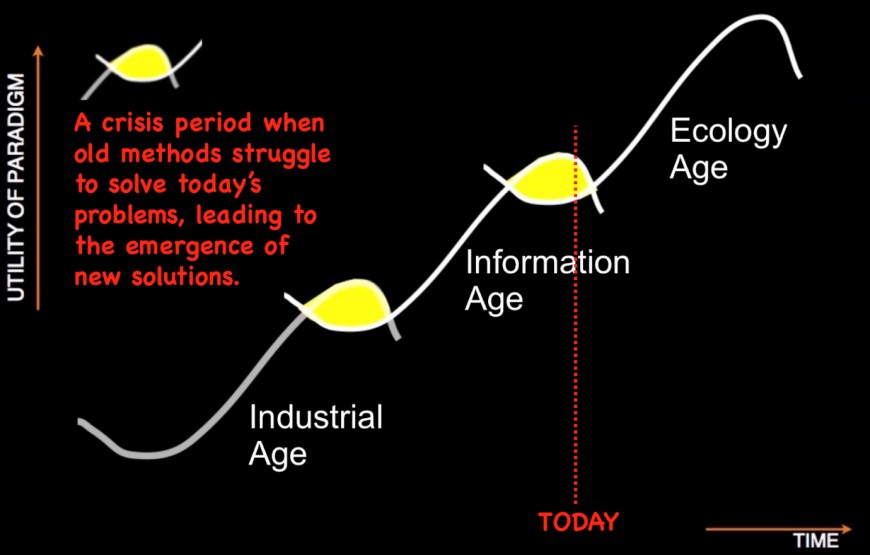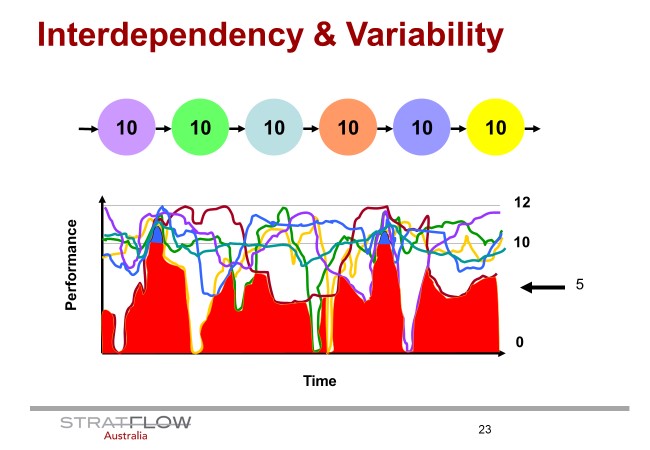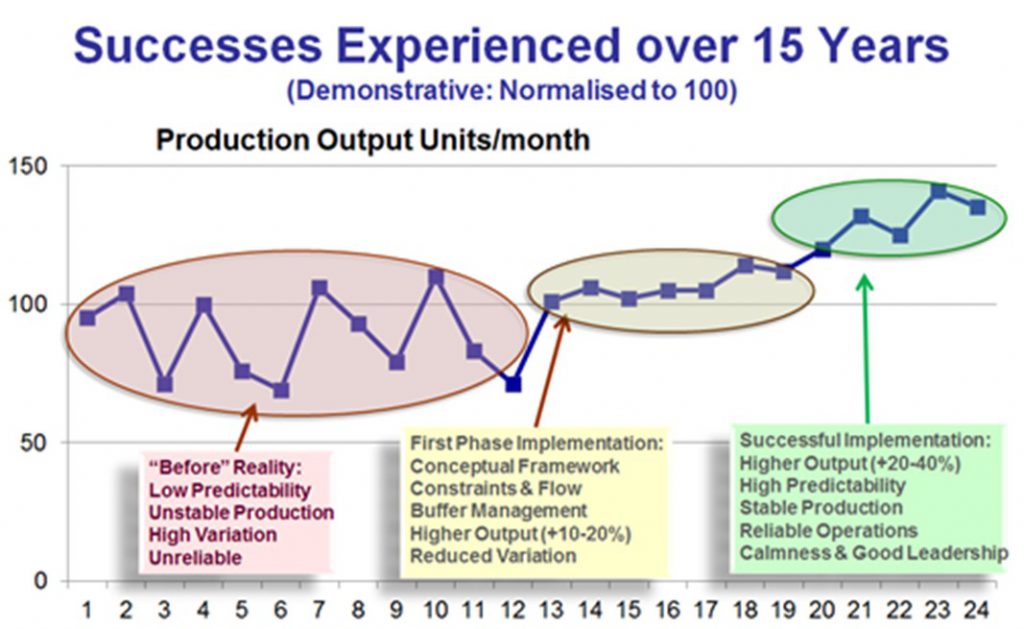Social licence and digitisation require new thinking

The industry agrees that both social licence and digital transformation are vital, but implementing a successful strategy that encompasses both these areas is not necessarily obvious. A new way of thinking about these issues is required for success now and into the future.
Mine managers spend lots of time trying to find ways of delivering better outcomes around social licence and digital transformation without losing focus on increasing the bottom line. Often these issues seem to be caught in a perpetual trade-off. Spend more time and effort on one, and it can reduce performance in the other.
The industry agrees that both social licence and digital transformation are vital, but implementing a successful strategy that encompasses both these areas is not necessarily obvious. A popular recommendation is for time-poor mining executives to renew efforts to satisfy all stakeholders, while at the same time holistically transform their enterprises end-to-end to cope with the demands of automation and digitisation, as well as simultaneously attracting and retaining highly skilled employees.
But what if this is not doable within our current management paradigm? Could this explain the limited results achieved to date? Have we reached a plateau in our ability to improve the way we manage these trade-offs? It may be time to reconsider the environment we find ourselves in, and how we approach these issues.
How did we get here? An overview of the Industrial and Information Ages
The Industrial Age growth mindset in the early 20th century was fuelled by ‘scientific management’ principles of productivity. The work environment was stable, certain and predictable.
As we entered the Information Age, systems thinking and human factors boosted by computer technology offered new and improved alternatives. For much of recent history, industry has rallied behind the mantra of ‘faster, better, cheaper’ in the pursuit of optimised efficiency.
However, all is not well. As consultants, we have seen promising Information Age digital tools yielding negative impacts and making operations extremely complicated. We have seen many attempts to optimise across their entire systems to achieve efficiency of all the parts. Some software packages are coded on this premise. However, systems thinkers like Russell Ackoff argue that as we try to optimise all the parts, we suboptimise the overall system performance (Houseworth, 2015). Eli Goldratt, in his Theory of Constraints (TOC), mathematically supports Ackoff’s claim. It is not surprising then that productivity in mining – adjusted for declining grades and deeper mines –dropped 28 per cent in the decade to 2015 (Lala et al, 2015).
In Figure 1, we show thinking evolving along a series of S curves (Lourens and Wong, 2019). In each age, the methods used carry along the best ideas and/or processes from previous ages. These methods deliver more and more value until society, technology and the environment start to change. What is considered ‘best practice’ starts to struggle to solve emerging problems. This crises period is shown in the yellow bubbles. In these bubbles, new methods emerge, but the dominant methods are strong enough to prevent them from taking off. It is our view that we are currently in the Information Age yellow bubble – ie, at the beginning of the ‘Ecology’ Age.

Figure 1. The evolution of thinking in the Industrial, Information and Ecology Ages.
Why the Ecology Age is different
The Industrial Age figured out how structure and function could be used to organise humans to run machines. The Information Age viewed mining operations as an engineering model. It was a closed system consisting of technology tied to processes performed by compliant people, all controlled by information flow. The whole is equal to the sum of its parts.
In the new Ecology Age, the boundaries of the engineering model are blasted open to a network that encompasses identified and not-yet-identified stakeholders. The latter includes new shareholders, civil protest groups, lobbyists, and any entity or individual forging an unanticipated relationship with the mine.
The surprising emergence of unexpected interactions means the whole is greater than the sum of its parts. Confusing dilemmas, ambiguous paradoxes and diverse conflicts are natural occurrences.
Mining has become a complex adaptive system (CAS). Management is forced to react to unplanned events on short timescales; this requires agility from the organisation. But agility requires a stable base from where the organisation can adapt quickly. The best practice methods of the Industrial and Information Ages employed today contain contradictions that makes it difficult to create a stable platform from where Ecology Age problems can be solved.
Two ideas from the Industrial and Information Ages have been instrumental in destabilising the production system. The first is the idea that all parts of the process should be run at maximum efficiency (Lourens and Wong, 2019). The second idea is that we should optimise the entire production chain from end to end – this could be implemented for the first time during the Information Age, as computing power increased and cost reduced (Lourens and Wong, 2019). The combination of these ideas results in a tendency to create balanced capacity production chains, as illustrated in Figure 2. The outcome of this is starvation and blockages and unstable production flow at output well below design. Cost per unit is significantly higher, and there is an exponential increase in issues that consume managerial span of attention – this is the world of firefighting.

Figure 2: The effect of interdependency and variability on mine output.
In this example, we have a budget set at ’10’ level and have resourced each department in the production chain to produce at an average 10. The different colour curves are the output for the corresponding colour department. According to management (and workers) this chain should perform at close to 100 per cent utilisation and efficiency. But because of interdependence and variability inherent in the closed system, the instantaneous output is the lowest of each of these curves. The actual output is much lower at 5.
This is bad enough for profit and cost per unit, but there is an outcome that is highly problematic for organisations that want to improve and deal with the ever faster changing environment. Imagine the nature of conversation between managers and workers when production output, in spite of numerous improvement initiatives, continue to behave as illustrated in Figure 2. This causes local trust and cooperation to evaporate.
It would seem to management that forcing accountability onto employees for the lower than expected production is the logical solution. With more data available, it became possible to enforce individual accountability by measuring employees and departments on more detailed KPIs. But this makes matters worse. Disharmony is injected into the organisation reaping diminishing returns. Yves Morieux of Boston Consulting Group explains this downward spiral in Smart Rules: Six Ways to Get People to Solve Problems Without You (Morieux, 2011). The continuing decline in employee engagement around the world seems to support this contention. For example, in Australia from 2013 to 2017 the proportion of employees that are rated as ‘highly engaged’ dropped from 24 to 14 per cent (Gallup, 2017).
Without any slack or spare capacity in the system, we are unable create the stability to meet our mandated goals reliably, month after month. Without stability, trust and cooperation, managers and employees have neither the time nor the ability to deal effectively with social licence and digitisation.
Social licence and digitisation are Ecology Age challenges
In 1976, planning theorists Rittel and Webber discussed how problems could either be ‘tame’ or ‘wicked’. While tame problems can be readily solved, ecological problems can be characterised as being ‘wicked’ (Rittel and Webber, 1976). Wicked problems, like those we must deal with in the Ecology Age, are difficult to clearly define and scope. Solutions to wicked problems are neither correct nor incorrect but rather make the situation either better to worse. Attempts to solve a wicked problem can change the dynamics of the current situation and inadvertently generate another wicked problem.
In our conversations with mining managers, we hear the lament they cannot free up the time to deal with the wicked problems of digitisation and social licence to operate (SLO).
Digitisation
The implementation of digital technology such as enterprise resource planning (ERP), robotics and automation is typically planned as a ‘engineering model’ project without taking into account its wicked problem nature.
The wicked problem nature means that it is difficult to define up front what the project should entail, hard to judge the performance of those involved and what eventual success looks like (Rittel and Webber, 1976). Planners in the project design stage are stressed by their inevitable limit to the understanding of what the new technological system is capable of and therefore what needs to be adapted in the bigger complex adaptive system.
Mine managers and IT departments often mention that time and attention can quickly become a constraint during the implementation of digitisation projects. The project runs into cooperation and trust obstacles, as well as measurement and reward systems that are not in alignment with the goals of the project. Data is often siloed with inadequate communication, and perhaps most importantly, no one knows what the crucial data is. Typical questions include: where should we start, and how will this affect other areas? What is the information each department really needs, and how will this affect other areas?
Social licence to operate
Social licence has been defined as existing when a project has the ongoing approval within the local community and other stakeholders, or broad social acceptance and, most frequently, as ongoing acceptance. But changing societal expectations affect mining operations. This influence is transmitted through government legislation or through conditions attached to the financing of operations.
In this environment, shareholders cease to be the only stakeholders; we need to include the employees, the local community and government. Social expectations include a desire for greater diversity, meaningful community benefits, better safety and environmental performance. These expectations are rising at a time when grades are declining and mines becoming deeper, factors that force miners to increase productivity. Many commentators believe that increased productivity will come from digitisation and automation. But these productivity drivers can negate social licence.
In the Industrial and Information Ages, stakeholders were known and manageable: obedient employees, loyal customers, reliable suppliers, subservient contractors. In the Ecology Age, the list has grown, and attitudes are continually changing: mistrusting local communities, demanding society at large, unpredictable legislators, nervous investors. Managers are also aware in the Ecology Age that the internet empowers people to socially connect and voice their concerns. Failure to place sufficient attention may lead to a tense issue ‘going viral’. Ecology Age problems like this keep mining managers awake at night because they are never-ending.
An enormous unknown is the nearness of a social licence tipping point. One will only know when a failure occurs, such as an unexpected civil protest, government stop-work order, employee revolt. Human tipping points can’t be seen.
When engaging the local community, people want to interact with the decision-makers of the mining company. But mining managers are already working flat out coping with day to day production problems. The natural reaction is to treat social licence as a tame problem by listening to only the loudest and most important voices, making a list of activities, establishing KPIs, and measuring performance.
This misconstrued handling of social licence can seriously damage the level of goodwill and trust. More worrisome is alienating the people who were not invited to participate or ignored; they often are ones who become the vehement protesters and activists. It is therefore impossible and impractical to solve wicked problems using ‘tame’ solutions.
What do we do?
Allow stability and agility to emerge in order to deal with Ecology Age issues
In a complex adaptive system such as mining, we strive for agility to make sense of dilemmas, paradoxes and conflicts so that we can take action. Agility is the ability of the organisation to renew itself and adapt quickly in an ambiguous changing environment. To achieve agility, an organisation needs stability – a productive flow of work where normal deviations (‘tame’ problems) are controlled and dealt with using conventional problem-solving methods. This platform anchors the company, generates steady income, and empowers workers so that managers are unshackled to handle social license issues.
When deviations are not normal or novel due to complexity (‘wicked’ problems), agility is necessary to adapt to the system. A different mindset and toolkit are essential. Since predictable cause and effect relationships are unknown, small trial and error sense-making experiments are conducted to understand and learn. Consequences are monitored to detect new patterns of emergent behaviour. The patterns signal which CAS constraints ought to be adapted to align better with SLO expectations. Progress is not measured by hard KPI numbers but qualitatively by a shift in the stories people are telling about the relationship between the community and the mining company.
1. Create a platform from which stability can emerge
Instead of trying to measure and manage to a greater level of detail, the aim is to find the few workflow constraints and focus on managing them well (Cohen, 2008). This is the essence of the theory of constraints (TOC). For this, we developed the ‘Productivity Platform’ more than 15 years ago.
In more than 95 interventions, the methodology has achieved output increases of average 20 per cent and has reduced operating costs by 10-30 per cent, typically within 3-5 months. It introduces new ways of measuring and managing employees where decision making can be delegated to the lowest level possible with excellent coordination across departments and levels of the organisation. In this manner, we remove the self-inflicted complexity to unshackle employees and managers. Organising activities around maximising the performance of leverage points in the system (constraints) while allowing slack in other resources, increases system productivity and bottom-line results while stabilising production flow at higher output, close to the inherent capacity of the system.

Figure 3. Stabilising production at increased output (Stratflow.com.au).
Employee engagement, trust and cooperation improve while work is simplified and the number of decisions to make reduces. Simplifying work is a prerequisite to get value from digitisation (Messenböck et al, 2019).
The combination of aligned vision, trust, freeing up the managerial span of attention, and slack in available resources are indispensable for achieving agility.
2. ‘Open the other eye’ to enable agility to emerge
During the 20th century, organisations managed with ‘one eye open’ because operations were stable, repeatable, and predictable. This is no longer sufficient; having both eyes wide open is critical. The other eye opens to see a real-world full of complexity and chaos. To be successful today requires stability and agility. To deal with this problem, we have developed ‘Mining Differently’ to operate in concert with stability delivered by the Productivity Platform.
Mining Differently
Mining Differently guides mining executives to implement a more sustainable approach by expanding the internal technical work environment to include the external social environment in the complex adaptive system. Our starting point is to not see SLO and digitisation as just two more business risks to manage but as emergent properties of a CAS.
Mining Differently harnesses innovative breakthroughs in social science practices and IT data analytical and visualisation techniques. The approach is grounded in the principles of natural science to avoid the empty promise of ‘flavour of the month’ solutions and pseudoscience.
Mining Differently begins by making sense of an organisation’s current situation, in particular the impact of complexity on the workforce. Humans are natural storytellers and narratives are ideal for making sense of complexity because they include context. Those with authority to set strategy and allocate resources now have unfiltered information on what’s truly happening in mining operations.
In Mining Differently, we dispense with conventional surveys and interviews and collect narratives that people tell every day about what happens inside and outside the organisation. Sense-making software and data visualisation tools convert narratives into data points in real-time to generate 2D contour maps called ‘narrative landscapes’.
In contrast to a fixed roadmap, the contours on a narrative landscape change in response to new narratives told. New clusters appear from the contour lines.
In the sample social licence to operate map shown in Figure 4, decision-makers can see the desired direction heading is to the top-right corner of the map. If a question arises about the location of a data point, a simple click reveals the narrative for reading. This feature is called ‘disintermediation’ and provides a direct line-of-sight connection between storytellers and decision-makers.
Management strategy is guided by the question ‘How can we get more stories like that and fewer like this?’

Figure 4: Social License to Operate.
In the sample map for digitisation (Figure 5), many storytellers are experiencing problems working on high-risk tasks with little guidance and direction. On the other hand, micro-managing is taking place with too much direction on low-risk activities. Early detection information indicates the nearness of tipping points and signal to management to take action before it’s too late.

Figure 5: Digitisation.
Mining Differently is envisioning the future as a vector heading with a desired direction and speed. Agility comes from conducting small short-cycle experiments to evolve the present. The outcomes (including serendipitous accidents) that emerge determine the next steps.
Contrast this approach with traditional high-risk digitisation projects, where scarce capital funds are invested in big bet transformation projects backed by a business case citing face-saving assumptions and forecasts with disclaimers.
Mining Differently is not aligning people under a set of shared values and top-driven goals. Forcing alignment can destroy much-needed diversity and creativity stimulation. More importantly, it can block the brain’s ability to recognise patterns and open a pathway to human-imposed disasters.
Conclusion
Mining has become a complex adaptive system and is at a crossroads. The unexpected emergence of new things and relationships means ‘the whole is greater than the sum of its parts’. In the Ecology Age, confusing dilemmas, ambiguous paradoxes and diverse conflicts are natural occurrences.
The Ecology Age requires new ways of thinking and doing compared to what worked in the Industrial and Information Ages. We cannot solve the wicked problems of social licence and digitisation using Industrial and Information Age thinking only.
Miners need agility to cope with the unexpected, but this is not enough. Managers and employees also need a stable platform that delivers mandated operational targets reliably and in so doing free up attention, resources trust and cooperation that is necessary for agility.
We believe that the Productivity Platform provides this stability, while Mining Differently provides the agility needed for making money now and in the future.
References
A Lala, M Moyo, S Rehbach and R Sellschop, 2015. Productivity in mining operations: Reversing the downward trend, McKinsey & Company [online]. Available from www.mckinsey.com/industries/metals-and-mining/our-insights/productivity-in-mining-operations-reversing-the-downward-trend
Cohen O, 2008. Ever Improve: A guide to managing Productivity the TOC way. Available at www.toc-goldratt.com/en/product/ever-improve-a-guide-to-managing-production-the-toc-way.
Gallup, 2017. ‘Gallup state of the global workplace: executive summary’ [online]. Available from: https://www.gallup.com/workplace/238079/state-global-workplace-2017.aspx
H Lourens and G Wong, 2019. Radical Innovation in mining management, Austmine [online]. Available from www.austmine.com.au/News/category/articles-editorials/radical-innovation-in-mining-management-article-3-the-ecology-age-stability-agility
Houseworth, 2015. Ackoff’s rules of system interdependency [online]. Available from https://ackoffcenter.blogs.com/ackoff_center_weblog/2015/03/applying-ackoffs-rules-of-system-interdependency-part-i.html
Lourens H and Blakemore J, 2017. Turning Mining performance around: Moving from efficiency to effectiveness [online], Australian Mining. Available from: www.australianmining.com.au/features/turning-mining-performance-around-moving-efficiency-effectiveness/
Messenböck R, Morieux Y, Backx J, Jahn J, Martin-Rayo F and N Ramjee, 2019. Simplify first, then digitise, Boston Consulting Group [online]. Available from www.bcg.com/en-au/capabilities/change-management/simplify-first-then-digitize.aspx.
Moreiux, Yves, 2011. Smart Rules: Six ways to get your people to solve problems without you., Harvard Business Review.
Rittel H and Webber M, 1976. Dilemmas in a general theory of planning, Policy Sciences (4).
About the authors
Hendrik Lourens

Hendrik Lourens is a Sydney based management consultant who has worked with Aurizon, Qantas, John Holland, CPB, Downer & Anglo American. He has qualifications in Physics, Polymer Science as well as an MBA. Hendrik has worked at Director level in manufacturing businesses and for a number of Tier 1 companies. On completing the ‘Managing the Theory of Constraints Way’ in 2010, Hendrik became the first practitioner to pass all exams involved in the TOC Body of Knowledge within one year. His focus is on applying Complexity Science & Theory of Constraints to deliver breakthrough results. He has turned around manufacturers and improved the safety & productivity of mining and construction companies as well as published in various journals on efficiency and innovation.
W: Stratflow.com.au and miningdifferently.com
E: hendrik@stratflow.com.au, hendrik@minigdifferently.com
Gary Wong

Gary is a Canadian engineer residing in Vancouver, Canada. He worked for Ernst & Young Consulting as a Senior Manager in Strategy & Transformation. Gary has operated on his own over the past decade focusing on complexity thinking and safety. He is a training associate with Cognitive-Edge Inc. and co-authors and delivers complexity courses and workshops. Gary is a regular contributor on the safetydifferently.com website and has been a Stratflow Associate since 2019.
W: gswong.com and miningdifferently.com
GaryWong@gswong.com, gary@miningdifferently.com